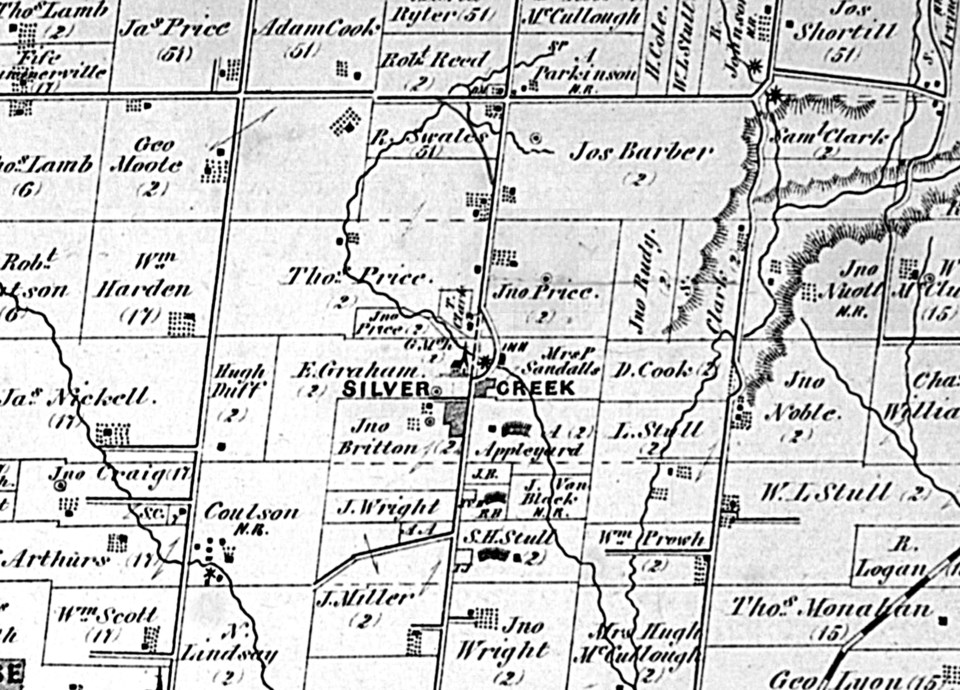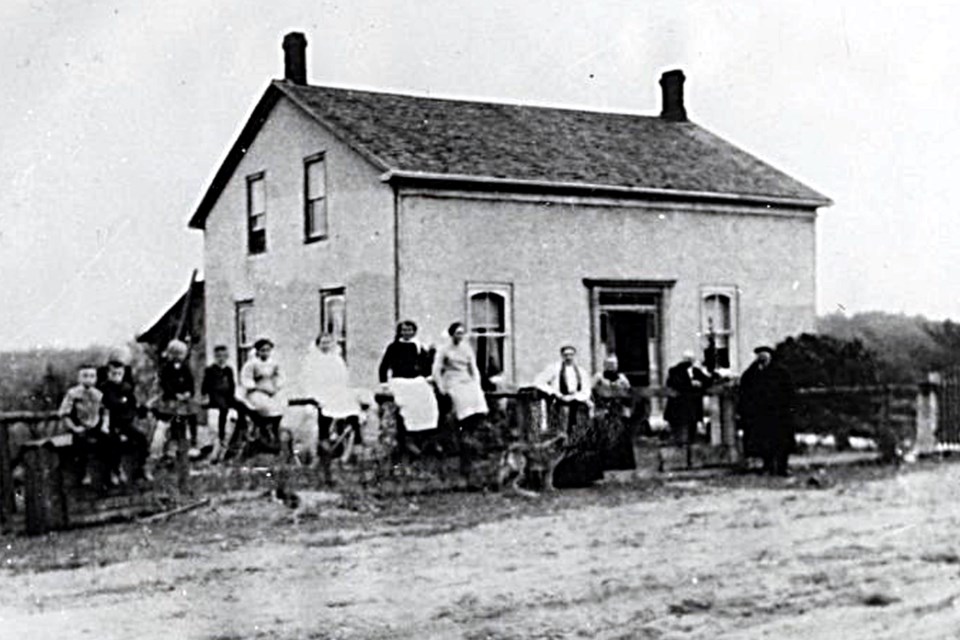The historic community of Silver Creek has seen a number of changes over the last 170 years, including a time when it was a place of economic activity.
Originally settled in the late 1840s, at the bottom of the hill on Trafalgar Road, Silver Creek received its name from the stream that winds its way through the area.
Trafalgar was once an essential route used by farmers to transport goods down to the harbour in Oakville, but the treacherous grade of the Niagara Escarpment at Silver Creek was often a tiresome trek of the journey during those days of horse and buggy.
Taking advantage of the situation, the village practically began to boom overnight as John Graham opened up a saw and grist mill in 1850, along with a tavern and a general store; a place where travellers could rest up and conduct trade before continuing on their way up or down the steep plank road that was on the face of the escarpment. A toll booth was placed atop the hill in order to cover costs of maintaining the road.

But the challenging road conditions at Silver Creek wouldn’t be of top concern for too much longer as, in 1852, it was announced that the Grand Trunk Railway would be constructing a railroad from Toronto to Guelph, which meant that more goods could be shipped by rail than by carriage.
With the announcement of rail to be completed by 1856, the property value in the village soared due to the relatively close proximity to the tracks and the valuable natural resources that lay beneath the ground. Quarrying of stone and gravel soon became Silver Creek’s principal industry, superseding the grist mill, which was ultimately left vacant as grain would begin to be moved by train.
The Halton County Atlas of 1877 mentions that the stone at Silver Creek was of “superior quality” and that a great deal of the stone from these quarries was used in building the International Railway Bridge at Buffalo in 1873 - a bridge that still stands to this very day.
While the quarry business in Silver Creek appeared to be doing well, it eventually dried up by the 1880s as other nearby communities, such as Limehouse, had a better reserve of stone.
In 1891, the creek would be utilized to serve as Georgetown’s first waterworks system consisting of a 400,000-gallon reservoir and a gravity-fed pipe carrying the fresh water into the town.
Despite there being no main industry in Silver Creek, the hotel continued to serve travellers for a number of years, even though it had faced various closures during the era of the Temperance Movement in the late 19th and early 20th century.
By the time Highway 7 came through in the 1920s, the steep road on the escarpment was straightened and the remaining village of Silver Creek had mostly resettled up the hill to its present location, with the old buildings demolished.

The Silver Creek section of Highway 7/Trafalgar Road saw revisions in the late 1960s when a curve was installed at 27 Sideroad and Trafalgar, and again in 1999 when the highway was expanded to four lanes, starting at the top of the hill. It was during the work in 1999 when remnants of the old village were discovered at the foot of the escarpment.
Today, Silver Creek consists of a service station, dating back to 1932, and a residential neighbourhood that straddles the two converging roads - a much different community when compared to its industrial past of 150 years ago.
Article written by Scott Brooks, with information from Dills Collection / Halton County Atlas of 1877 / EHS / HHPL



